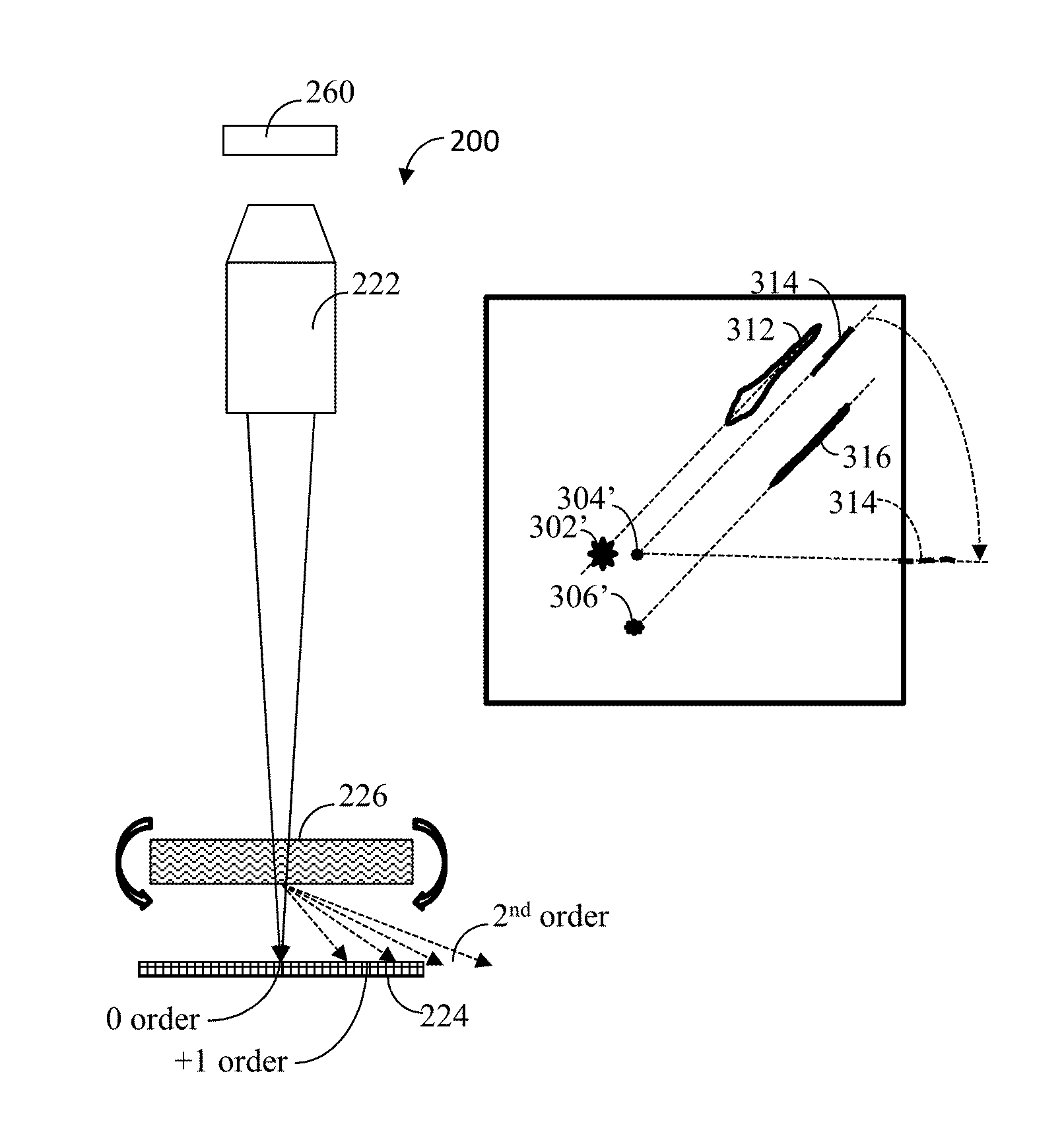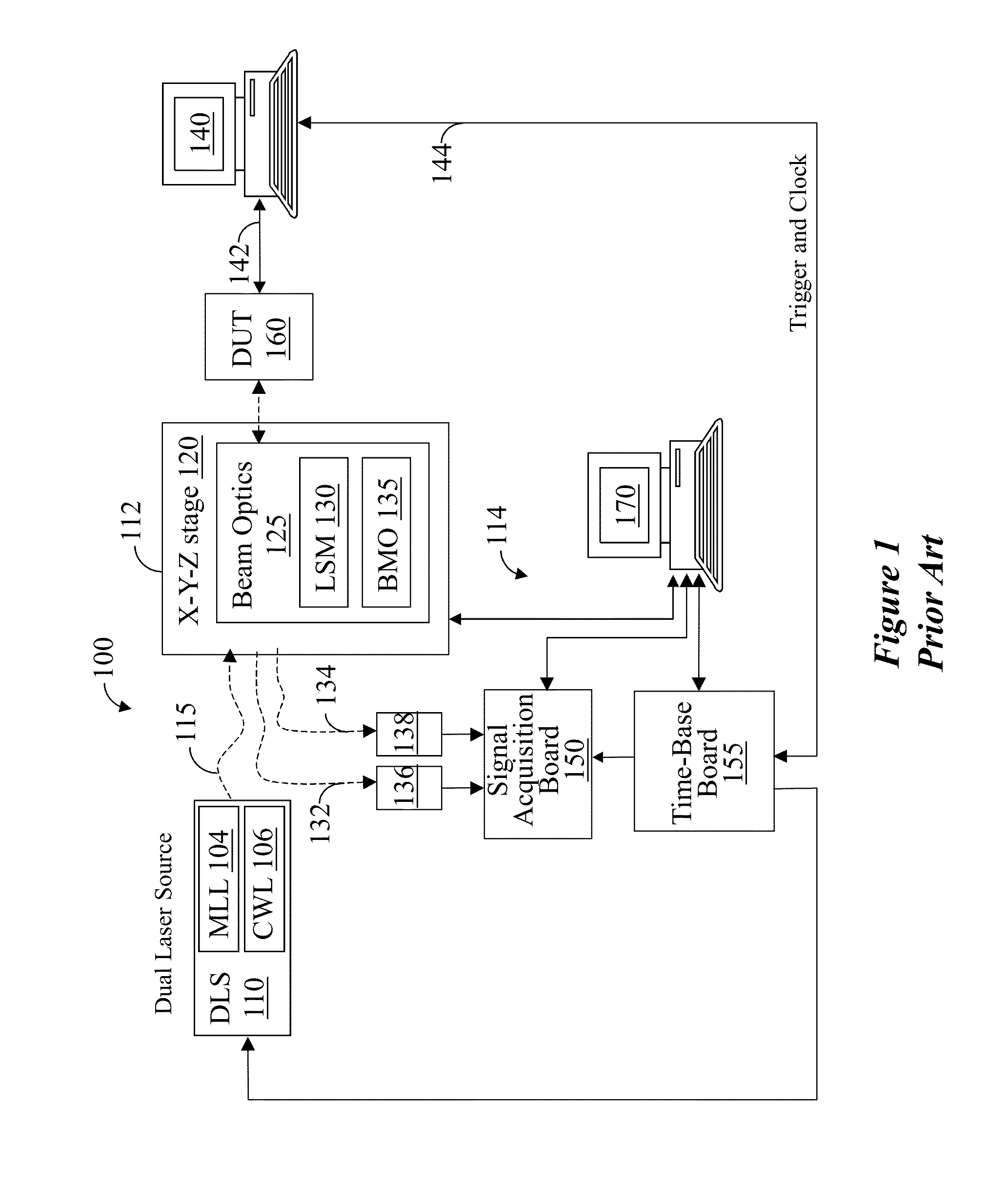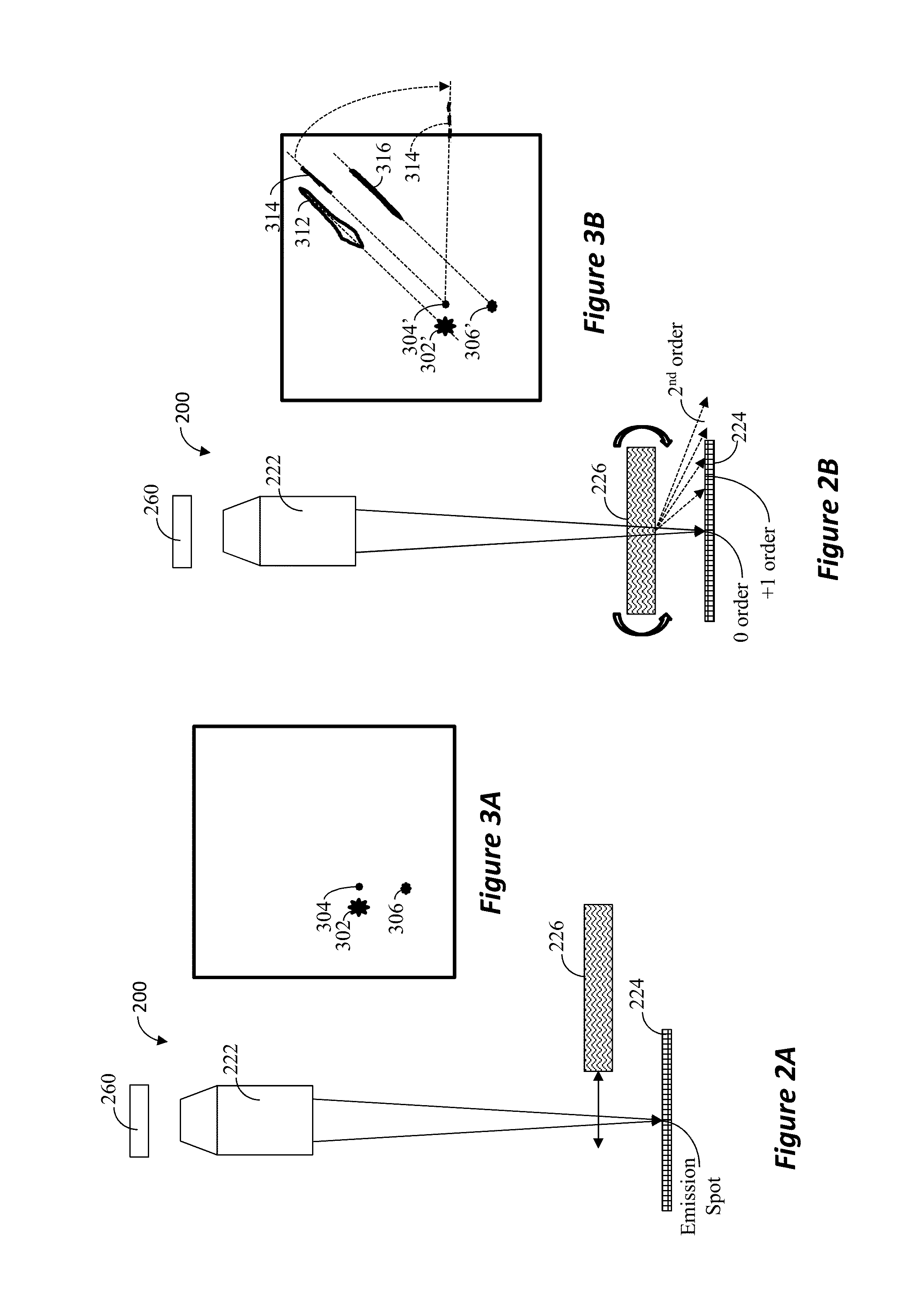Spectral mapping of photo emission
a technology of emission spectrum and photon emission, which is applied in the direction of optically investigating flaws/contamination, material analysis, instruments, etc., can solve the problems of complicated dut probing, malfunctioning devices, and becoming more difficult to identify malfunctioning devices, so as to maximize efficiency and minimize power
- Summary
- Abstract
- Description
- Claims
- Application Information
AI Technical Summary
Benefits of technology
Problems solved by technology
Method used
Image
Examples
Embodiment Construction
[0041]Various embodiments of the present invention provide apparatus and method for non-invasive, non-contact method for probing active transistors within a selected area of the DUT. The described methodologies augment the prior art system by enhancing the ability to identify faulty devices or identify working transistors in a wrong state because of surrounding issues like shorts, due to process / design errors, provide improved ability to localize the faulty device even in a highly dense area, and provide method for classifying the fault to assist in failure analysis. In fact, embodiments of the invention also enable identifying thermal emission. For example, conductor line resistance emission can be identified, i.e., not transistor or device but just resistive metal line emitting heat. The curve or spectral profile in that case is even more exponential than the NMOS in saturation. Various embodiments showing examples of implementation of the system will now be described.
[0042]FIG. 2...
PUM
| Property | Measurement | Unit |
|---|---|---|
| wavelengths | aaaaa | aaaaa |
| wavelengths | aaaaa | aaaaa |
| frequency | aaaaa | aaaaa |
Abstract
Description
Claims
Application Information
 Login to View More
Login to View More - R&D
- Intellectual Property
- Life Sciences
- Materials
- Tech Scout
- Unparalleled Data Quality
- Higher Quality Content
- 60% Fewer Hallucinations
Browse by: Latest US Patents, China's latest patents, Technical Efficacy Thesaurus, Application Domain, Technology Topic, Popular Technical Reports.
© 2025 PatSnap. All rights reserved.Legal|Privacy policy|Modern Slavery Act Transparency Statement|Sitemap|About US| Contact US: help@patsnap.com



